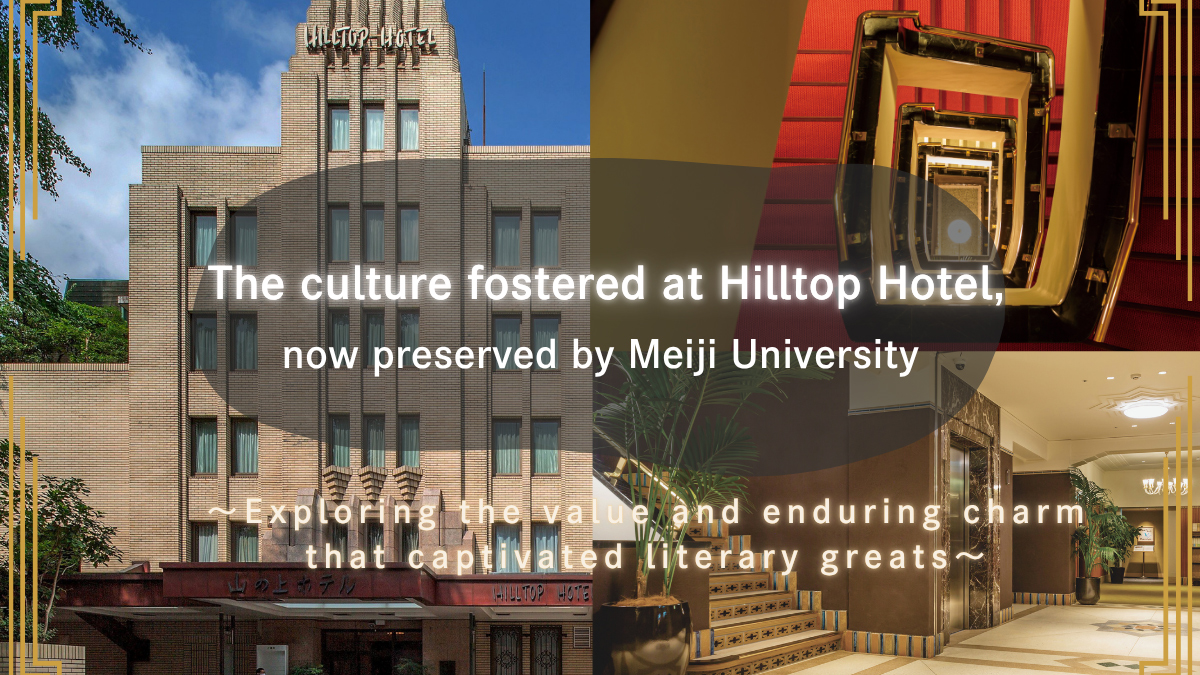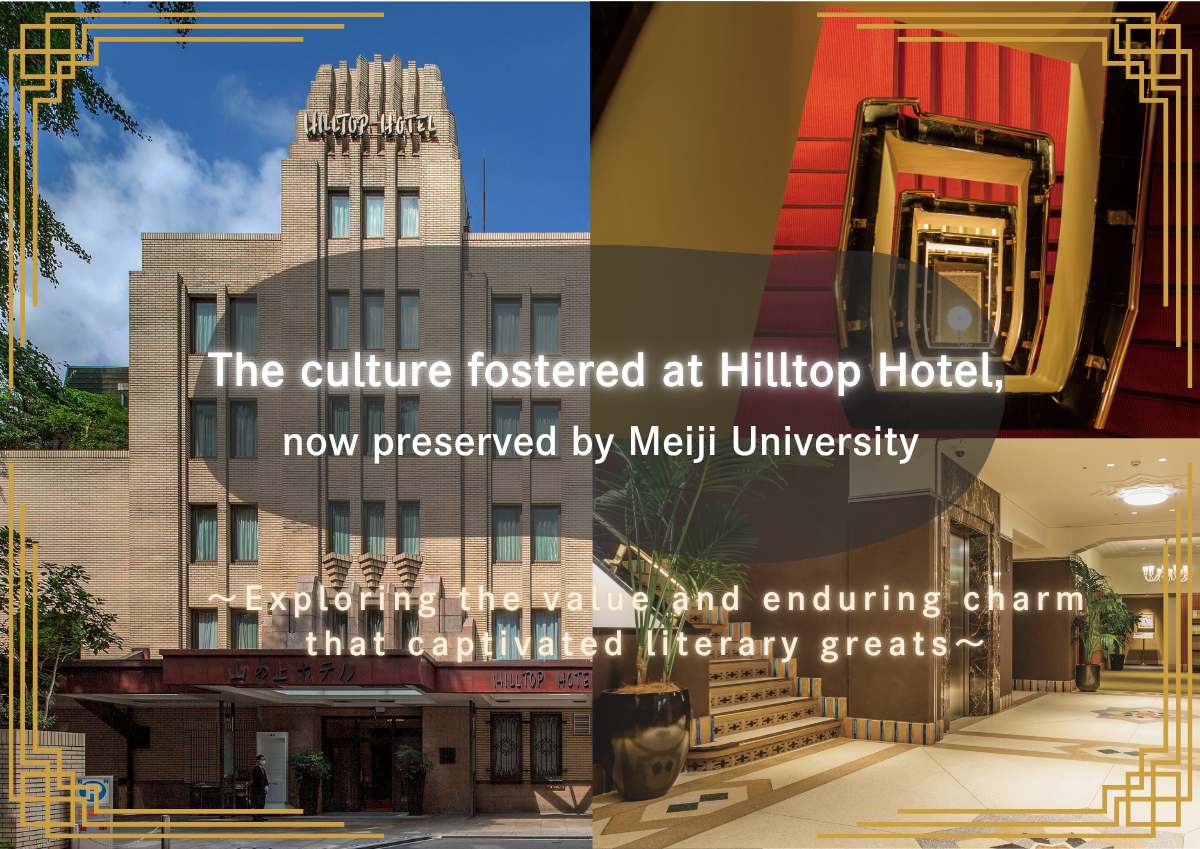
Hilltop Hotel stands next to Meiji University Surugadai Campus. The hotel, designed by American architect William Merrell Vories, showcases classical grace and charm through its Art Deco elements.
Located near Jimbocho in Kanda, home to numerous publishing companies, the hotel served as a workplace for writers. Notable literary figures such as KAWABATA Yasunari, MISHIMA Yukio, and IKENAMI Shotaro, stayed there to write and rest.
More than simply a place to stay, the hotel is recognized as a piece of cultural heritage. What made it so beloved?
On April 19, 2025, Meiji University Liberty Academy, a center for lifelong learning, hosted a free public lecture titled “Hilltop Hotel and the Culture It Nurtured: A Crossroads of Literature and the Arts.”
Guest speakers included HIRAO Takahiro, former president of Bungeishunju Ltd., and YUZUKI Asako, author of The Hotel of My Dreams (Watashi ni Fusawashii Hotel), a novel set at Hilltop Hotel. Both speakers, well-acquainted with the hotel, shared its charm and cultural value.
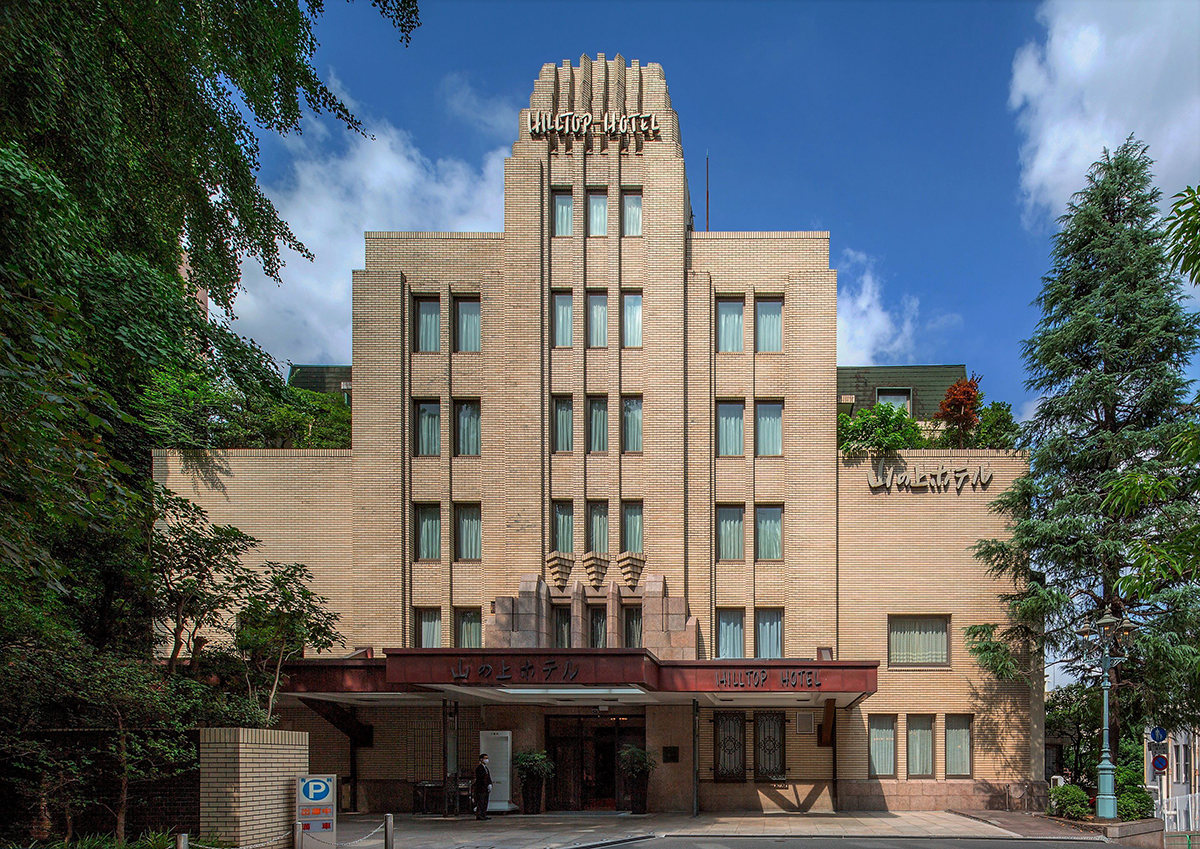
An extraordinary bond between Hilltop Hotel and writers
Owing to the deterioration of the building, the hotel was regrettably closed, but in November 2024, its property was acquired by Meiji University.
The hotel building was initially constructed as a facility to aid those in need, funded by a donation from SATO Keitaro, a Meiji University alumnus and a businessman who also supported the construction of the university’s Women’s Division building. Given such connection, Meiji University has taken over the hotel and intends to maintain its lodging function after necessary renovations, while also considering its use as a student support center and a hub for local community collaboration.
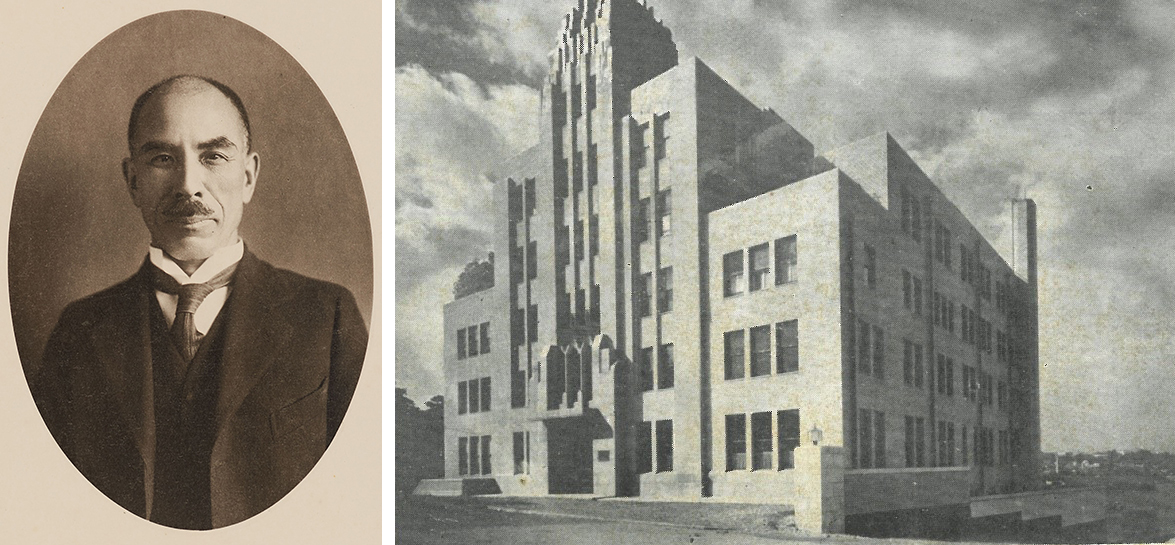
Professor ITO Ujitaka of the School of Arts and Letters, the event’s organizer, is one of many who felt a deep affection for the hotel. As a literary critic, he often visited the hotel for meetings and dinners while working on his publications. He also visited on private occasions. “An extraordinary and tender bond flourished between the writers and the hotel,” observes Professor ITO, a scholar of modern and contemporary literature. He outlined the event’s aim, noting: “Through stories from our guest speakers, Mr. HIRAO and Ms. YUZUKI, discover the hidden charm of Hilltop Hotel. I hope this event offers an opportunity for those attached to the hotel to consider how its valuable legacy can be passed on to future generations.”
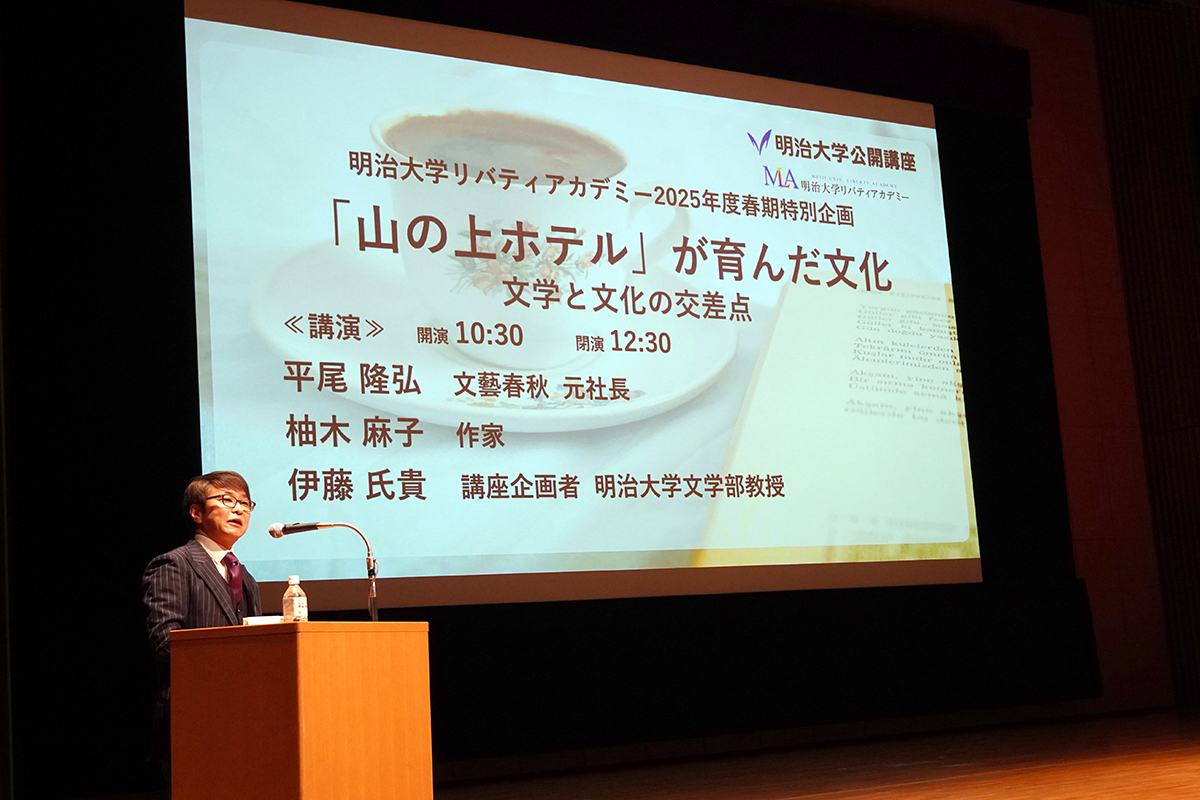
Hilltop Hotel― A beloved retreat known for its gracious hospitality
The first session featured HIRAO Takahiro, former president of Bungeishunju Ltd. and editor-in-chief of its monthly magazine Bungei Shunjū. “Those regarded as intellectuals tend to have distinct preferences when it comes to what they eat, wear, and how they live,” HIRAO began.
As for hotels, it is widely known that world-renowned fashion designer Coco Chanel lived at the Ritz Paris for more than thirty years. Japanese intellectuals, it seems, have also cultivated a preference for certain hotels.
Among the many stories linking the hotel and writers, HIRAO recalled an episode involving MURAKAMI Haruki. “Murakami-san usually avoided places like coffee shops for meetings. But one day, as we were walking near Hilltop Hotel, he asked if I wanted to grab a beer there. I agreed. Then, I remember thinking he must be fond of this hotel too.”

HIRAO describes Hilltop Hotel as “a hotel that seemed to embody a pure belief in Mencius’s theory of human nature ― that people are inherently good and sincere.” The hotel’s dedication to genuine hospitality was evident in everything ― its location, exterior and interior designs, size, cuisine, and staff. The overall ambiance and the service of the hotel created a special moment apart from everyday life, winning the affection of many, including intellectuals.
Through his work, HIRAO had the honor of dining with Empress Emerita Michiko, then the Empress, at the hotel. Reflecting on the unforgettable experience, he remarked, “The hotel’s warm hospitality and superb meal pleased Empress Emerita, and we were able to spend a truly calm and delightful time.”
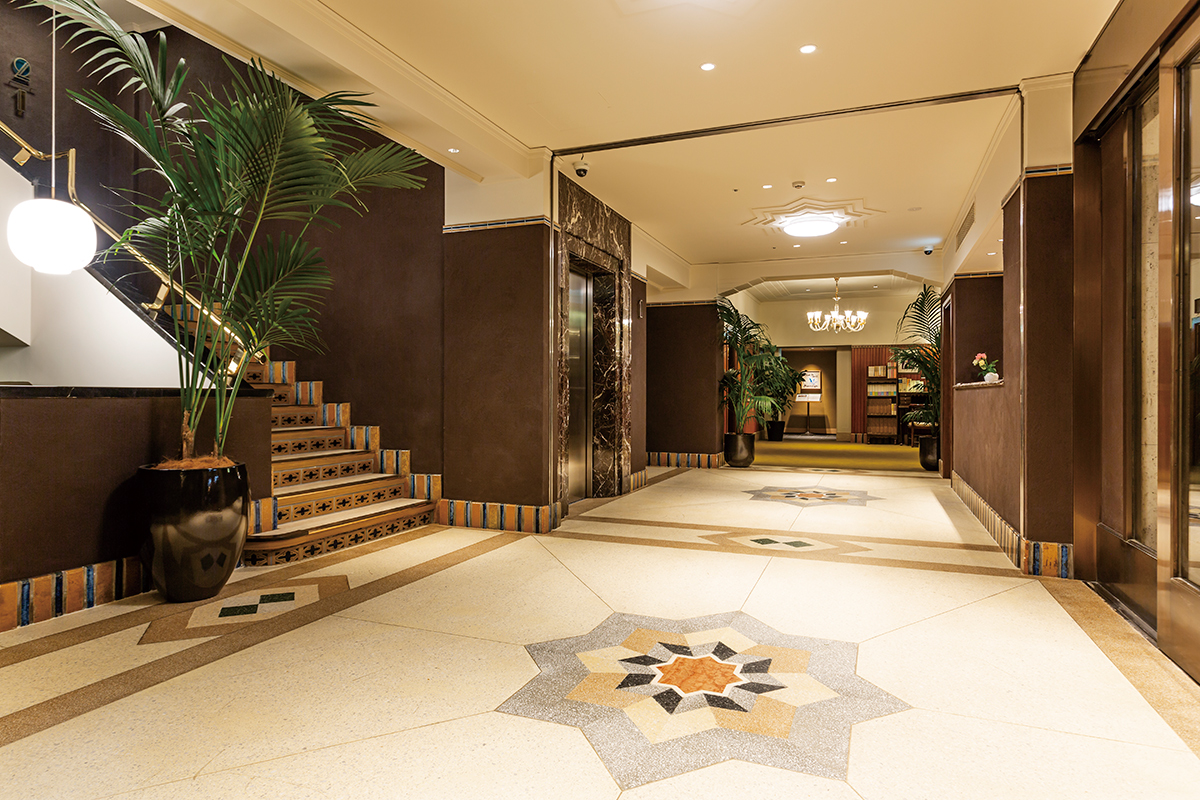
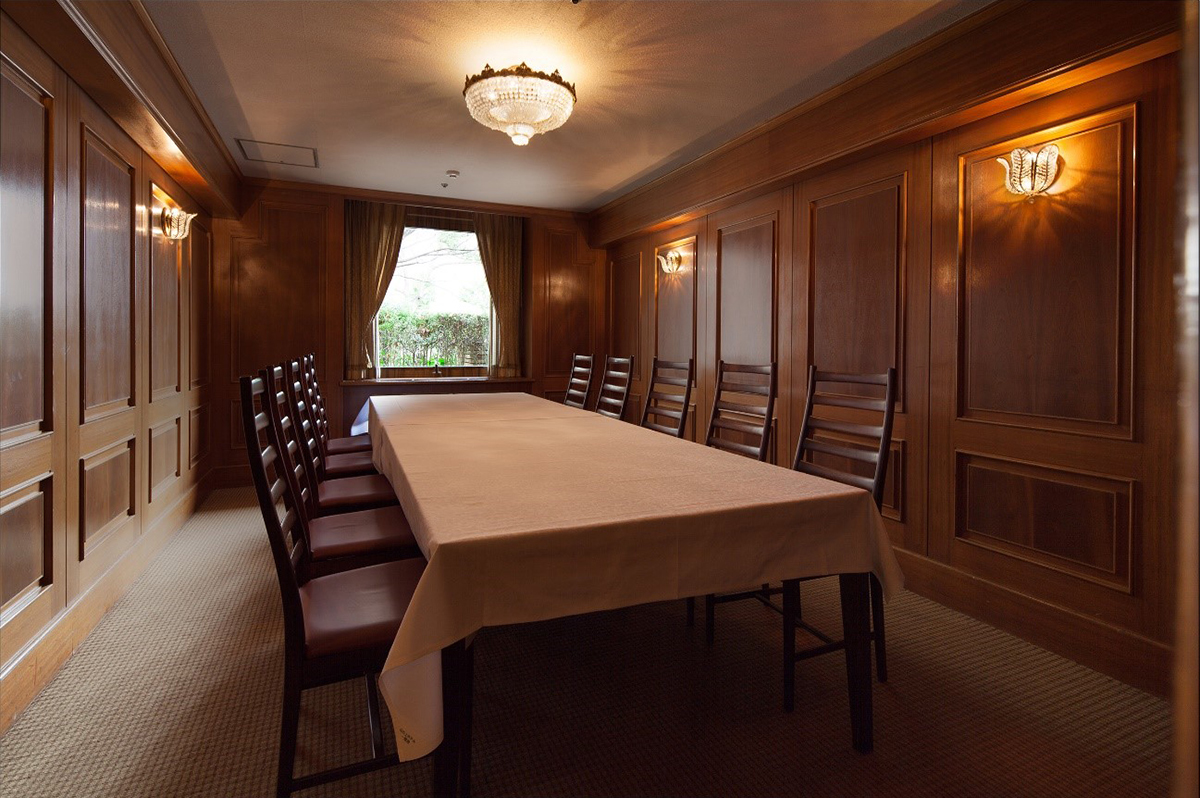
“The hotel on the hilltop remains just as it was in days gone by. It’s best not to change it.”
Bungei Shunjū featured an advertisement for Hilltop Hotel every month. The hotel’s founder and president, YOSHIDA Toshio, reportedly came up with the ad catchphrases himself. HIRAO shared several of them.
“Sleep deeply, dream beautifully.”
“Modern hotels would love to feature dozens of rooms. Ours is a small, cozy retreat for those who truly want to be here.”
“Old age is as joyful as youth ―it’s the season of harvest.”
Some messages highlight the hotel’s charm and comfort, while others convey life lessons. The president’s witty, refined words, carrying a fragrance of culture, reflect the concept that set the hotel apart from others.
Quoting President YOSHIDA’s words, “The hotel on the hilltop remains just as it was in days gone by. It’s best not to change it,” HIRAO added, “The idea that certain things are left untouched or remain unchanged gives me a sense of relief.” He went on to share his hopes for the hotel’s future: “I was delighted when I heard that Meiji University was taking over Hilltop Hotel. I truly hope that the hotel will reopen and it will once again embody a pure belief in human goodness, offering comfort to people of all ages and genders.”
A beloved old hotel still captivates young people
In the second part, YUZUKI Asako, author of The Hotel of My Dreams, was featured. The novel, set in Hilltop Hotel, was later adapted into a film.
The main character of the novel is a fledging writer with a deep longing for the hotel. She stays there at her own expense, immersing herself in the fantasy of being a best-selling author. This episode is grounded in YUZUKI’s own experience ―she stayed at the hotel at her own expense before she became a successful writer.
Hilltop Hotel is not equipped with the latest amenities, nor does it boast a trendy atmosphere ― but its charm still resonates with young people.
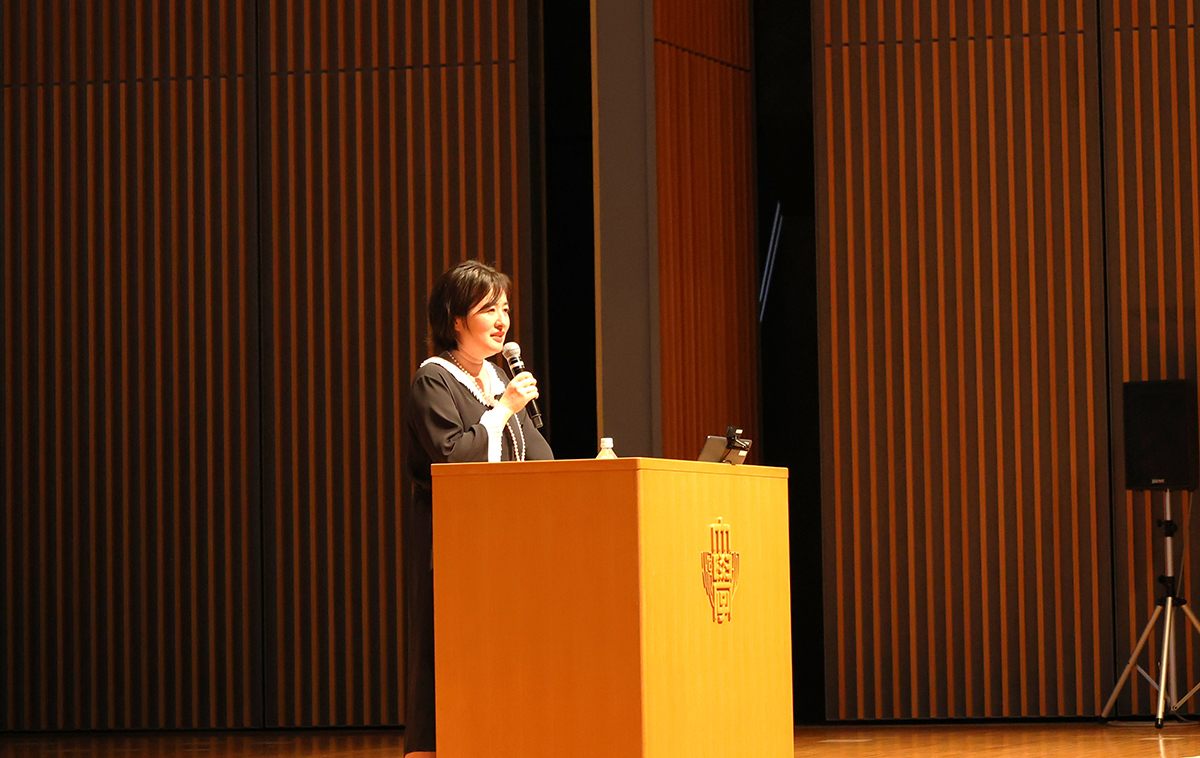
YUZUKI held her wedding reception at Hilltop Hotel, where she treated her guests to the hotel’s signature dish, tempura. After staying the night, she and her partner went to the city office the next day to submit their marriage registration.
She shared more episodes related to the hotel: One involved having a cocktail in her pajamas at the hotel bar, inspired by writer YOSHIYUKI Junnosuke, who had once done the same. Another centered on a small study space in the hotel, lined with the complete works of TANABE Seiko ― a writer who frequently stayed there. YUZUKI enjoyed reading those volumes during her visits. Her stories clearly reflect the fondness she felt for the time she spent at the hotel.
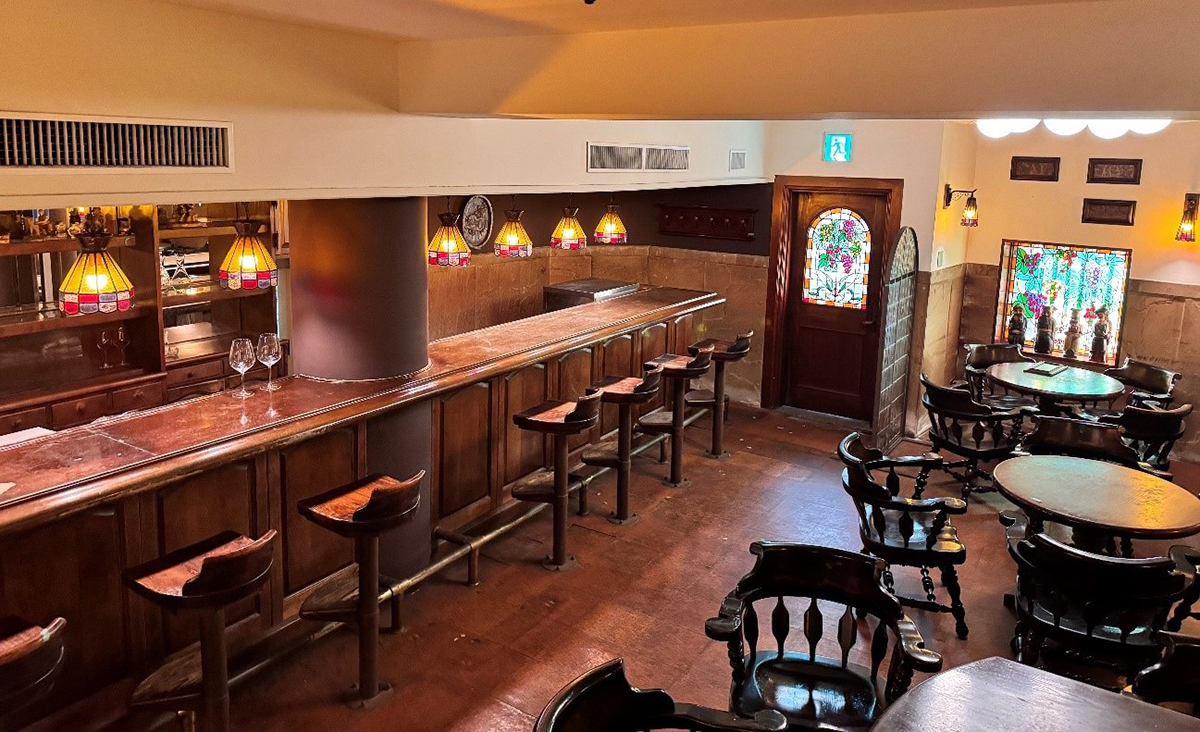
Preserving the hotel as a cultural and historical landmark
Hilltop Hotel is also recognized for its significant architectural value.
William Merrell Vories, the designer of the building, was married to a Japanese woman who was related to HIROOKA Asako, an influential educator and business leader active from the Meiji Restoration through the Taisho period.
“Vories also appears in Rantan, a novel based on the life of KAWAI Michi, the founder of Keisen Jogakuen, my alma mater. At her request, he designed a dormitory for second-generation Japanese students who had come to study from overseas. Through his connection with HIROOKA Asako, Vories became involved in designing many buildings for girls’ education and women’s activism ― one of the reasons I’m drawn to his architecture.”
Beautiful design and comfort are among the key charms of his architecture. The hotel exemplifies this, offering a cozy atmosphere through features such as moderately low ceilings and compact rooms and corridors, tailored to suit the Japanese people of the time. When filming The Hotel of My Dreams, YUZUKI was worried that there would not be enough space for the necessary equipment. Director TSUTSUMI Yukihiko, however, addressed this challenge by employing an inventive technique involving numerous small cameras. “It means a lot that we were able to film the hotel with cutting-edge technology before it closed. Actually, I had the chance to act in the film and put my heart into the performance. So, I hope you’ll check it out. I’m sure you will enjoy it,” said YUZUKI, sharing some behind-the-scenes stories.
To all Meiji.net readers: be sure to check out The Hotel of My Dreams.
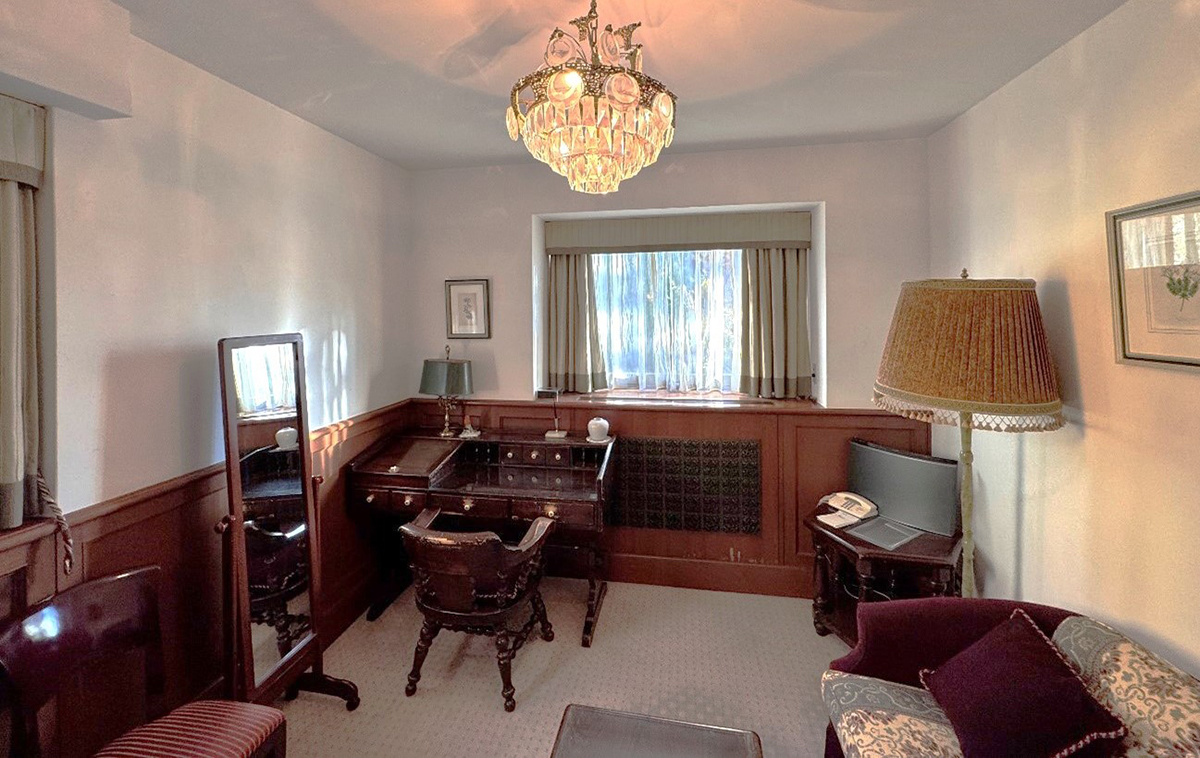
YUZUKI also proposed several creative ideas for utilizing the hotel, any of which could draw considerable attention if realized. “I sincerely hope that Hilltop Hotel will continue to thrive with all its charms ―supported by the educational programs of Meiji University and its students, as well as by literature lovers and those with a special affection for the hotel,” she remarked.
Following the heartfelt talks by HIRAO and YUZUKI, who both expressed a deep fondness for Hilltop Hotel, Professor ITO concluded the session by stating: “The hotel may be closed for now, but I believe the literary and cultural seeds planted here will continue to flourish. I hope we can work together to preserve this treasured place.”
HIRAO Takahiro, former president of Bungeishunju Ltd.
Joined Bungeishunju Ltd. in 1970. Served as editor-in-chief of CREA, a woman’s magazine, as well as the weekly Shukan Bunshun and the monthly Bungei Shunjū, and was president from 2009 to 2014. Currently serves as Visiting Professor at Kobe City University of Foreign Studies and chairs the Friends of the Setagaya Literary Museum.
YUZUKI Asako, novelist
Born August 2, 1981, in Tokyo. Won the All Yomimono Award for New Writers for Forget Me, Not Blue. Published her first book, Shuten no no Anoko (The Girl at the Terminal), which includes the award-winning work, in 2010. Her works include Lunch no Akko-chan (Akko-chan’s Lunch) and Rantan.
ITO Ujitaka, event organizer, Professor of School of Arts and Letters, Meiji University
Graduated from Waseda University’s School of Humanities and Social Sciences. Received doctorate in art from the Graduate School of Nihon University College of Art. Won the 45th Gunzo Prize for New Writers (Criticism Category) in 2002 for Tasha no Arika ―Akutagawa no Gengo-ron (Where Others Are: Akutagawa’s Linguistic Theory). Currently active as a literary critic.
Meiji University Liberty Academy:
Meiji University seeks to be open to local communities, offering educational programs like this course to foster social collaboration and benefit society through the application of academic knowledge. Organized and operated by Meiji University, Liberty Academy, a center for lifelong learning, offers public lectures by faculty members as well as guest speakers.
For details, visit Meiji University Liberty Academy website
* The information contained herein is current as of March 2025.
* The contents of articles on Meiji.net are based on the personal ideas and opinions of the author and do not indicate the official opinion of Meiji University.
Information noted in the articles and videos, such as positions and affiliations, are current at the time of production.

